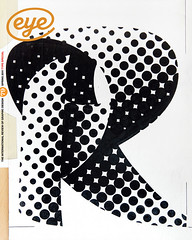Spring 2011
Rip and Recycle
Green Patriot Posters
Graphics for a Sustainable Community (ed. Dmitri Siegel and Edward Morris, Thames and Hudson, £19.95)Many regard climate change as a problem but there are precious few who conquer their apathy long enough to do anything about it. So the publication of Green Patriot Posters: Graphics for a Sustainable Community (edited by Dmitri Siegel and Edward Morris, Thames and Hudson, £19.95), a whole book of pithy, perforated posters designed to spark eco-idlers into action, is to be welcomed.
Raising the profile of environmental issues is a laudable cause, and the production of the book is admirable. Climate change, however, is tricky to communicate and promote. It possesses an intrinsic ‘us & them’ dichotomy – you are either part of the solution or part of the problem – which makes it difficult to avoid patting yourself on the back or further alienating the ‘other side’.
Green Patriot Posters features a number of perfunctory essays on the aims of the project but the type treatment, along with the tight margins (a waste-cutting measure), makes for an uncomfortable read. Turning to the posters, you are instantly confused by the credits. The big idea of the book is that readers will tear out the single, perforated pages and hang them as posters, which means that the caption facing each image is for the image on the previous page.
Despite contributions from Paul Elliman, Shepard Fairey and James Victore, the overall work is of mixed quality. For every highlight (by Geoff McFetridge and Frédéric Tacer, for instance) there are several that do not match up. For all the team’s commendable efforts to produce this book with as little waste as possible, one cannot but think it would have been greener had they not made it at all.
I do not mean this churlishly. On page, the posters are divorced from their purpose, you get no sense of the impact the work is intended to possess, and even those pieces you might want on your wall are disappointingly small. Print-on-demand is gaining in popularity and quality, and would allow customers to have a single poster at a worthwhile size, without the 49 images they do not want.
First published in Eye no. 79 vol. 20 2011
Eye is the world’s most beautiful and collectable graphic design journal, published quarterly for professional designers, students and anyone interested in critical, informed writing about graphic design and visual culture. It is available from all good design bookshops and online at the Eye shop, where you can buy subscriptions and single issues.

